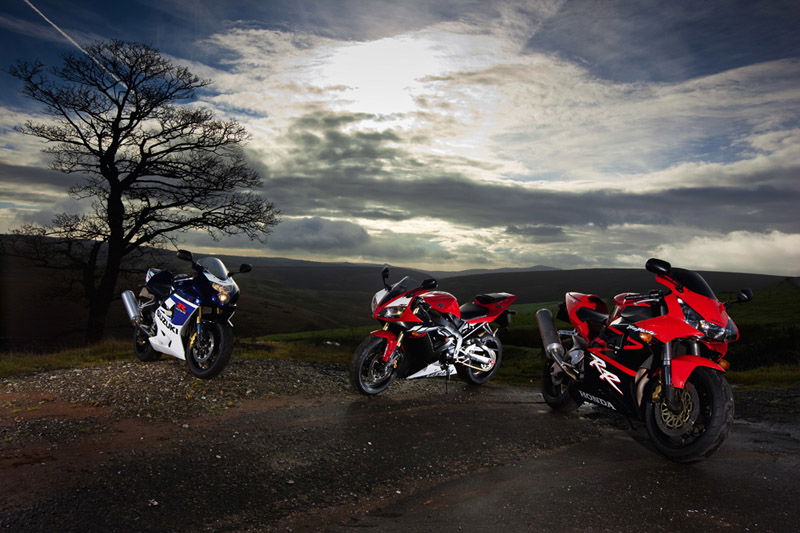Used Test: 2000 GSX-R600 review
Fashion may have consigned the 2000 GSX-R600 to history with its now dated bulbous looks, but it is still an utter ripper of a bike, and a bargain at that.


In the fashion-conscious, 'latest is greatest' biking world we live in these days, it's easy to dismiss some older bikes, especially in the sportsbike class. But the more discerning among you will realise that though age might dent the image of a particular bike, its actual performance is still good enough to make it an appealing buy. A used 2000 GSX-R600 is a classic example of this, and one you can very much benefit from.
Issues like it not having the raciest styling, sporting carburetors rather than fuel-injection, and conventional forks instead of inverted ones, don't matter a jot. The simple fact is, the Suzuki is still a bloody good bike. And one that's worth a fair deal of consideration. Get the right one, and you feel you've got a bargain. That's how we felt after trying a 2000-spec model from a dealer.
In fairness our bike was very good example in brilliant condition and with just 4000 miles on the clock. But anyone shelling out the typical dealer asking price of £4395 will quickly consider it money well spent.
There's no doubt that the GSX-R looks a bit dated these days. Its shapes and lines didn't alter much since it was launched in 1997. But underneath that fairly big and bulky architecture lies a more than very capable banzai sportsbike.
The handling of the Suzuki is its very best feature. The chassis is very, very impressive. And blasting down your favorite backroad on a Sunday morning is an experience and a half. Riding it on track is even more fulfilling.
It's a big bike physically and at first gives the impression it might be a bit ungainly. But that's far from the case. Steering is quick and light thanks to short and steep geometry, making chucking the 600 around a less than a laboured affair. And though it's a few kilos heavier than the latest class-leaders you won't notice that too much. High-quality suspension gives exemplary feel and feedback. Finding the limits of the GSX-R round corners isn't easy, but the forks and shock give you a much easier and safer chance of trying to discover them. Few bikes offer this much control and confidence while swinging round corners at speed. If you can get it over far enough to touch down the pegs, consider yourself a hero.
Just one word of warning though before you start trying to emulate the likes of world supersport racer Stephan Chambon (who proved the Suzuki was still competitive by winning in WSS) though, the GSX-R can get a bit frisky when pushed really hard over bumps. But then that foible's easily sorted with a decent steering damper.
The power of the brakes isn't as impressive as the rest of the bike either. And though they're okay in most circumstances, they can feel a bit weak and wooden under real pressure. Though improving them is easy, and makes them much more effective. Make those two mods, and the 600 can be thrashed as far as your own limits and the Gatsos allow.
Straightline speed isn't as strong as the current crop of 600s, but it's still good enough to thrill and figures like 140mph and more are readily attainable. And though this second-generation carbed-version of the engine isn't quite as strong as the fuel-injected version, it still has a fairly grunty and flexible delivery in the mid-range. However, in typical GSX-R fashion, the 600 does respond to revs, and a good caning through the gears always brings the very best out of the inline four.
With a very slick gearbox and willingness to spin, thrashing the motor feels almost obligatory. It's a very exciting bike to ride hard and the gorgeous howl from the four-into-one pipe merely adds to your speed cravings. Provided you know how to ride, doing this will allow you to keep up with most other sportsbikes (never mind any of the newer 600s) as long as the road's twisty enough to let you add the advantage of the chassis as well.
Slower and longer runs are possible thanks to the rangy riding position and relatively large fairing and screen, but anyone with a lengthy inside leg might find need to take rest-breaks now and then thanks to the lofty footrest position. Even so, for a bike as apparently focused as the GSX-R, touring potential is surprisingly good. It's even got bungee loops and a decent steering lock, proving its designers had more on their mind than just lap times when they penned this bike.
Penning your name on the logbook of a used GSX-R 600 is a wise idea if you fancy a bit of budget mph. The Suzuki might not be the latest and greatest bit of middleweight sporting hardware you can lay your hands on, but the sort of performance it offers for around £4000 shows it's still really worth a look.
Evolution of the Suzuki GSX-R600
1997: The middleweight race-rep was launched. Visually very similar to the 750T model, the 600cc in-line four featured carbs and conventional forks
1998: Internal engine mods give better mid-range and slightly more peak power. Has slightly lower screen, and larger fuel tank
2001: Now has fuel-injection, and revised bore and stroke to give 599cc capacity with more revs. Handling improved with new suspension internals





